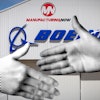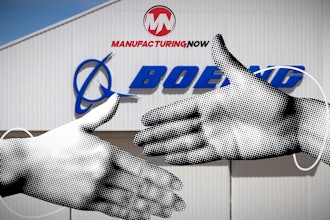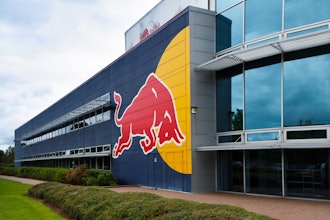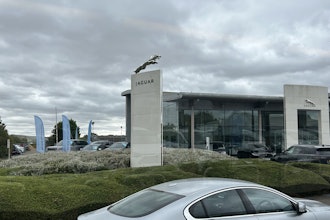As tariff negotiations and trade disputes roll on in fits and starts, manufacturers and their supply chain partners are getting a real-life object lesson in the importance of a resilient supply chain. From productive disruption like smart factories and digital transformation to the destructive forces of hurricanes and earthquakes, global companies face a constantly shifting array of challenges.
Recent tariff developments have added some reassuring substance to the 90-day trade war ceasefire announced by the US and China in early December. Assuming resolution efforts stay on course, the looming threat of price hikes, crop gluts and materials shortages may be relieved. That doesn’t change the fact that weather and politics happen, of course. It also doesn’t alleviate the pressure to do business more sustainably and conserve water and electricity.
Every industry, including farming and retail, faces unique but profound changes for which they must start preparing. Automakers, for example, have to deal with the demise of the combustion engine, and the rise of ridesharing companies, electric and autonomous vehicles, strict environmental regulations, and more.
Increasingly, manufacturers need to produce goods closer to their customers due to variable factors like tariffs, skills shortages, and costs for labor, logistics, and energy. It’s not as simple as deciding whether or not to re-shore production. Consumer classes are rising in new markets; manufacturers should be ready to adapt their sourcing practices and supply chains to new regions and cultures. Procurement frameworks and technology platforms that enable global agility will be a primary focus in the year ahead as manufacturers work to optimize and integrate digital capabilities throughout the enterprise and supply chain.
More Shifting and Pivoting for Manufacturing in 2019
In response to disruptive forces and in preparation for future business models and markets, smart manufacturers are getting ready to shift production, and learning to do it more frequently and efficiently. This means finding new sources of supply, qualifying them, and building out new or revamped supply chains. This is an effort of massive scale and complexity. Enterprises must carefully assess if they have the resources—finances, technology, and skilled labor—to set up and optimize supply chains in new areas where they want to build up capacity. GM is in the thick of one of these pivotal moments, and while tough calls like closing plants and laying of thousands of workers aren’t popular, even the biggest manufacturers in the world must prepare for deep disruption.
Being ready to open, close, and relocate plants efficiently requires organizations to develop sophisticated mechanisms for leverage, visibility, and control. The activity required to qualify suppliers is a major undertaking, especially in heavily regulated industries. This is how procurement has been pushed to the forefront of digital transformation. It is only by incorporating comprehensive, integrated, and intelligent procurement systems that supply chains can become agile and resilient enough to compete, grow, innovate, and execute strategy — no matter the disruption of the day.
Stepping back to take in the larger picture, there are so many emerging advancements in computing and technology — cloud, big data analytics, IoT, 3-D printing, robotics, process automation, and machine learning—we keep moving the boundaries of what’s possible. We’ve only begun to explore these capabilities individually, and the real potential lies in their combination.
Organizations that still depend on spreadsheets and emails to source materials and manage suppliers won’t be able to keep up with their competition. Large global manufacturers are out in front rewriting the rules of engagement. Other enterprises and supply partners shouldn’t wait any longer to step up their procurement game.
Better Tools for Building Competitive Advantage
Given the state of procurement technology and analytics, there’s no reason to compromise profit margins to preserve speed to market. Often, manufacturers will sacrifice their target costs in order to beat competitors to market. Or, a product launch will be six months late due to efforts to optimize production costs. With a comprehensive digital procurement system, you can achieve both objectives. As companies realize they have access better tools in their pursuit of competitive advantage, new approaches are materializing.
In 2019, companies that aren’t managing indirect and direct costs on a holistic procurement platform are leaving money on the table; they won’t be able to keep margins intact or drive efficiency improvements. In order to maintain speed, agility, and balance, they have to be able to get the right information in front of the right decision-maker at the right time.
Cultivating Resilience is Good Risk Management
Manufacturers have a serious responsibility to protect their customers, partners, and resellers. Quality, safety and compliance issues can quickly damage profits and reputations. Increasing visibility and control throughout the value chain makes it possible to detect problems before they turn into losses or advantage killers.
Being able to “spin up” a supply chain in a new location with maximum efficiency and reliability is the best way to remain resilient in the face of the most serious global challenges—natural disasters, climate change, geopolitical unrest, resource scarcity, and economic uncertainty.
Procurement is about much more than preparing for the worst. It’s about building better products, working smarter, and being ready to close the big deals.
The ability to make hard decisions quickly—and then execute efficiently—is the surest way to competitive advantage.
Not much seems certain about the year ahead, but manufacturers can be sure that procurement platforms will be key to successful digital initiatives—and staying upright through whatever 2019 has in store.
Greg Anderson is Vice President at Ivalua.






















